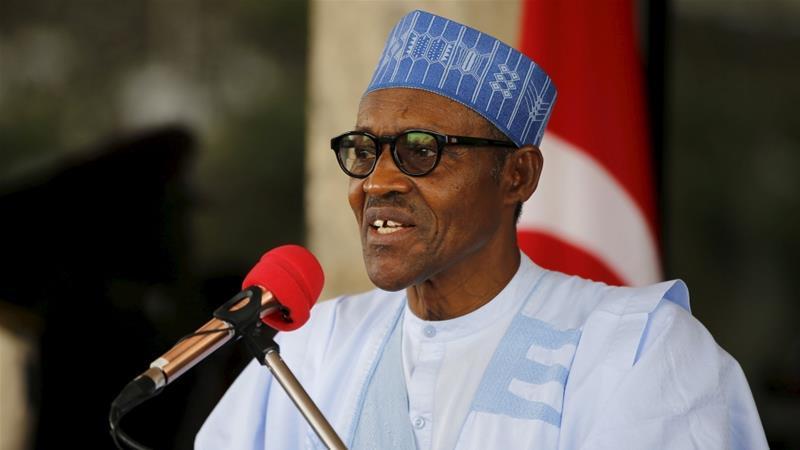Foreign news
How will China shape its new journey for the coming five years?

China is holding the widely-anticipated fifth plenary session of the 19th Central Committee of the Communist Party of China (CPC) in Beijing starting from Monday, with a focus on the blueprint for the country’s future.
Undoubtedly, China will keep upholding the centralized and unified leadership of the CPC and staying on the path of socialism with Chinese characteristics, but on the future prospects of the world’s second-largest economy as it prepares economic and social development plans for the next five years, questions remain.
How will China navigate this new stage of development? What will China’s economic and social roadmap be in the post-epidemic era? The following is a comprehensive guide for you to catch the pulse of the meeting.
Why does the meeting matter?
The highest decision-making bodies of the CPC, China’s ruling party, are composed of two parts: the CPC National Congress, and the CPC Central Committee elected by its national congress.
Here is a review of all such plenary sessions since late 2012:

The fourth plenary session last year reviewed and adopted the CPC Central Committee’s decision on some major issues concerning how to uphold and improve the system of socialism with Chinese characteristics and advance the modernization of China’s system and capacity for governance.
According to the agenda of this year’s session, the proposals for formulating the country’s 14th Five-Year (2021-2025) Plan for Economic and Social Development and future targets for 2035 will be assessed.
Drawn up every five years since 1953, the FYP is a major feature of China’s governance system, setting growth targets and defining economic and social development policies to ensure national strategies keep pace with the times.
Since 1953, China has formulated and implemented 13 FYPs. This year, for the first time, a 15-year “long-term vision” is mentioned along with the 14th version of the FYP, aiming for 2035 when the country’s socialist modernization is expected to be basically achieved.
Eyes on China’s plan for coming years
Development goals set for the 13th FYP period (2016-2020) are about to be accomplished, which will mark a new and major step forward in China’s economic and scientific power, as well as national strength.
Analysts said that given growing uncertainties, the 14th FYP has attracted great attention, as it will be the first FYP after China accomplishes building a moderately prosperous society in all respects and realizing its first centennial goal in 2020, as well as making all-out efforts to achieve its second centennial goal – to build a great modern socialist country around 2049.
“The 14th Five-Year Plan will be a critical plan, drawn up at a critical time,” said Wang Changlin, president of the Academy of Macroeconomic Research of the National Development and Reform Commission.
The Political Bureau of the CPC Central Committee has said that the FYP is a “vivid practice of China’s socialist democracy.” But how?
China has solicited public opinions online on compiling the 14th FYP since August 15, and by convening and presiding over a number of symposiums, Chinese President Xi Jinping has directly listened to opinions and advice on the country’s economic and social development in the 2021-2025 plan period from all walks of society.
After gathering suggestions widely, how will the blueprint be drawn up?
Clues can be found from the Political Bureau’s meetings, during which the following principles are stressed in making the 14th FYP – upholding the overall leadership of the CPC, maintaining and improving the system of socialism with Chinese characteristics, putting people first, building a new development pattern, deepening reform and opening up and forestalling and defusing major risks and challenges.
Adhering to these key points, three aspects may be highlighted in the plan.
– Dual circulation
First introduced in May, the new development pattern known as “dual circulation,” which takes the domestic market as the mainstay while letting domestic and foreign markets boost each other, has been placed high on the authorities’ agenda.
In pursuing the new development pattern, scientific and technological innovation, especially making breakthroughs in core technologies, is widely regarded as the key to shaping domestic circulation.
When talking about what to expect for the next five-year plan, Bert Hofman, former World Bank Country Director for China, told CGTN during an interview that the dual circulation is a vital strategy in China’s economic blueprint.
“Two elements of more domestic demand and more domestic capability and innovation are, I think, an important part of the dual circulation. It does not mean that China is going to close down,” he said, and added that the domestic circulation is going to be more important than the international circulation when rebalancing towards more domestic capabilities.
“Over the past decade, China has increased household consumption in GDP a little bit, from 35 percent to about 40 percent but it has a long way to go,” he said.
– High-quality development in economy
While chairing a meeting on the new plan in November last year, Chinese Premier Li Keqiang stressed several principles of making the new plan, including to keep the economy running within a reasonable range, to promote high-quality development, to emphasize the vision of people-centered development and to highlight the role of reform and innovation in tackling difficulties.
Following the principle of pursuing progress while ensuring stability, all regions and departments have deepened the all-round reform, taken the initiative to further open up and maintained medium-high economic growth within a reasonable range, he said.
Wang Tao, the chief China economist at UBS Investment Bank, predicted in his article that the 14th FYP will emphasize fostering structural changes domestically and improve the quality of growth.
“This means that the 14th FYP will likely set ambitious targets for urbanization (likely another 5-point increase in hukou urbanization rate), new urban employment growth (possibly another $50 million in 2021-25), increase in shares of consumption and services, improvement in the social safety net, and an increase in education and research and development spending,” said the economist.
– People’s sense of fulfillment, happiness and security
Aside from providing the general direction, the 14th FYP is more like “a super policy package” – setting quantitative indexes on many fields, including economic growth and environmental protection, and listing major programs and infrastructure projects affecting people’s livelihood, Yan Yilong, a research fellow with the Center for China Studies at Tsinghua University, told the Global Times.
Meeting people’s ever-growing needs for a better life has always been an important issue in China, and Xi Jinping has called for efforts in promoting the development of China’s education, culture, health and sports sectors to reach the goal.
In this regard, policies concerning these areas will undoubtedly be covered in the 14th FYP.
Managing editor: Duan Fengyuan
Video editor: Zhang Rongyi
Copy editor: Moosa Abbas
Chief editor: Chen Ran
Producer: Dang Zheng
Managing director: Zhang Shilei
Foreign news
Pakistan Moves to Deepen Diplomatic, Economic Relations With Nigeria

The Government of the Islamic Republic of Pakistan has called for deeper diplomatic and economic ties with the Nigerian government to foster development for both countries.
Mr Rana Ihsaan, the Coordinator to the Prime Minister of Pakistan made the call in an interview with the News Agency of Nigeria (NAN) during his working vist to Nigeria on Wednesday in Abuja.
NAN reports that the visiting Coordinator held a closed-door meeting with Yusuf Tuggar, the Minister of Foreign Affairs.
After the meeting, he said that both both sides had agreed on deepening relations in the areas of trade and commerce, among others.
Ihsaan said that both countries must see the need to accelerate efforts towards a Bilateral Trade Agreement (BTA).
He said that Pakistan had already submitted a draft BTA and was awaiting Nigeria’s response.
According to him, discussions centered on easing visa processes, expanding educational exchanges, and strengthening Cooperation in sectors such as Minerals, Youth training, and Defence were highlighted.
Ihsaan said that Pakistan had already implemented visa-on-arrival for Nigerians at no cost, and urged Nigeria to reciprocate to enhance people-to-people ties.
He stressed the importance of high-level engagements between both nations, describing Nigeria and Pakistan as very similar countries with large populations, youthful demographics, and vast economic potentials.
“Deeper collaboration will unlock opportunities in trade, education and investment, while further solidifying long-standing diplomatic relations,” he said.
He said that aside from visiting the foriegn Minister and other top government officials in Nigeria, he was also in the country to attend the on-going West Africa Beauty Exhibition holding in Lagos.
He described the exhibition as one of the continent’s largest cosmetic fairs, adding that he led a delegation of 19 Pakistani business people exploring Nigeria’s estimated 10 million dollar beauty and cosmetics market.
Ihsaan said that Nigeria was a gateway to Africa, adding that Pakistani products, like cosmetics, Textiles, Pharmaceuticals, Food items and Sports goods were already gaining traction in the country.
He encouraged Pakistani exhibitors to establish offices, Warehouses and logistics partnerships to strengthen their foothold in the Nigerian market.
Ihsaan further addressed concerns from Nigerian businesses on the ease of doing business in Pakistan.
He said that the Trade Development Authority of Pakistan had been supporting Nigerian participants at major exhibitions to achieve the ease of doing business.
“The Special Investment Facilitation Council (SIFC) serves as a one-stop platform for Nigerians interested in investing in Pakistan,” he said
Culled from NAN
-

 Featured6 years ago
Featured6 years agoLampard Names New Chelsea Manager
-

 Featured6 years ago
Featured6 years agoFG To Extends Lockdown In FCT, Lagos Ogun states For 7days
-

 Featured6 years ago
Featured6 years agoChildren Custody: Court Adjourns Mike Ezuruonye, Wife’s Case To April 7
-

 Featured6 years ago
Featured6 years agoNYSC Dismisses Report Of DG’s Plan To Islamize Benue Orientation Camp
-

 Featured4 years ago
Featured4 years agoTransfer Saga: How Mikel Obi Refused to compensate me After I Linked Him Worth $4m Deal In Kuwait SC – Okafor
-
Sports3 years ago
TINUBU LAMBAST DELE MOMODU
-

 News11 months ago
News11 months agoZulu to Super Eagles B team, President Tinubu is happy with you
-
Featured6 years ago
Board urges FG to establish one-stop rehabilitation centres in 6 geopolitical zones
